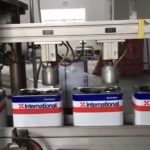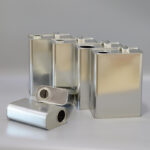For a long time, when talking about Toyota, the first thing everyone thinks of is the compliments such as Pisci, high reliability and so on. However, in recent times, with the fermentation of abnormal Toyota oil incidents, this kind of trust is gradually being replaced by worry. After the car is available, RAV4, Weilanda and many other riders have expressed their concerns almost every day. Today, the impact of the incident continues to spread. Everyone is asking "What happened to Toyota?" Today, we try to use this article to tell you all we have learned:
1. What happened to Toyota's engine oil?
2. What models are involved and how wide is the scope?
3. What are the current dilemmas facing car owners?
4. What could be the cause of the abnormality?
5. What questions do we have?
Engine oil emulsification + engine oil increase
Starting from about mid-to-late February 2020, information about the occurrence of oil emulsification in the 2.5L dual engine model of FAW Toyota RAV4 was circulated on the Internet, and then many Toyota car friends have expressed that they found similar situations. The anomaly is mainly manifested in oil emulsification and increased oil.
The reason why these two abnormalities cause everyone's concern is because oil plays an extremely important role in maintaining the normal operation of automobile engines. Engine oil emulsification is often caused by the mixing of two immiscible liquids: engine oil and water. After the engine oil is emulsified, it becomes creamy and loses fluidity and lubricity, thereby failing to provide protection for the engine. The increase in engine oil may be related to the mixing of gasoline. Mixing with gasoline will cause the oil to be diluted and reduce its viscosity, thereby failing to provide normal protection for the engine. In the final analysis, the two abnormalities in the engine oil may cause severe wear and tear or even scrapping of the engine. Before the conclusion that convinces consumers, car owners are also worried that these abnormalities are congenital diseases caused by the design defects of the engine itself. Worrying about great harm and bad repairing is the direct cause of everyone's worry about the oil incident.
The 2.5L dual engine model became the hardest hit area? Anomalies seem to be probabilistic events
At present, in the feedback from various channels on the Internet, it is more common for the 2.5L dual engine model (code-named A25B) to have problems. These models include FAW Toyota RAV4 Rongfang, GAC Toyota Camry, FAW Toyota Asia Dragon and their respective dual engine models. They are The hardest hit area of this oil incident. Other power versions of these models, such as the 2.5L gasoline version and 2.0L gasoline version, have relatively little feedback.
However, based on the feedback from several riders after having a car, the occurrence of engine oil abnormality seems more like a probability event. An owner of the RAV4 introduced the 2.0L model. His car experienced an increase in oil after 3 months of picking up the car, but the increase in oil was not obvious and the driving was not abnormal. Another RAV4 honoured 2.5L dual-engine vehicle owner reported that his car did not find any abnormalities in the oil after 4,000 kilometers. The third is the owner of Asiadragon 2.5L Shuangqing. His car has not found any abnormalities, but this incident still caused him panic and worry. The fourth is the owner of the 2018 Camry 2.5L Dual Engine. He has driven more than 20,000 kilometers, and feedback has not found any abnormalities. After understanding the situation of these four riders, we found that not all 2.5L dual-engine models will have abnormal engine oil, and other power versions are not necessarily without problems. The oil abnormality looks more like a probabilistic event.
User: After waiting for three months, it is difficult to mention the car
In view of the current situation, many car users have encountered difficulties. Some of them are owners who ordered RAV4 dual-engine models before the Spring Festival. After three months of waiting, the car is just around the corner, but this car is still not mentioned. Whether there will be any abnormalities when they come back is what they are most concerned about and entangled the most.
There are still many similar entanglements. It can be seen that everyone is very concerned about the development of this matter. In the final analysis, buying a car is undoubtedly a big event for our consumers. They choose Toyota because of its reliable reputation. Now that such an abnormal situation occurs, I fully understand their concerns as Toyota owners.
Who is the culprit of this storm?
At present, the cause of the abnormal oil incident has not yet been identified. Therefore, the culprit responsible for the storm is still "at large", but three "suspects" have been locked.
Suspect 1: Wet Wall Effect The so-called Wet Wall Effect means that when gasoline is injected into the cylinder of a direct injection engine at a low temperature, it condenses into liquid droplets due to contact with the low temperature cylinder wall, and penetrates into the oil pan along the inner wall of the cylinder. And because the oil temperature is low, it is not enough to heat the gasoline so that it will be discharged through the crankcase ventilation pipe to participate in the combustion again, which will cause the oil to dilute, which is manifested by the increase of oil and the smell of gasoline in the oil.
Toyota's current engines with increased oil use a mixed injection form of intake manifold and in-cylinder direct injection, which has the conditions for a wet wall effect. At the same time, the frequent short-distance car use feedback from the riders, the working condition of only about 4 kilometers one-way combined with the low temperature climate condition also conforms to this conjecture. Previously, the sensational Honda 1.5T engine oil increase incident was precisely for this reason, Honda subsequently carried out a large-scale recall, and adopted a number of measures to promote the engine temperature as soon as possible to reduce the impact of the wet wall effect.
Suspect 2: Emulsification due to poor water discharge or leakage As mentioned earlier, oil emulsification is caused by the mixing of two immiscible liquids, oil and water. When discussing oil emulsification, the most important thing is to understand the source of water and the degree of oil emulsification. Generally speaking, there may be two sources of water that cause oil emulsification. One is that water is generated by the combustion of the engine. Under low temperature conditions, water vapor will inevitably become condensed water and penetrate into the oil pan. The pipe for water vapor discharge is closed, and the water vapor escaping to the oil filler port may cause oil emulsification. This situation is relatively common in low-temperature, low-speed and short-distance driving conditions. Another possibility is that there may be component defects or even design defects in the engine cooling system, causing the coolant to leak into the oil pan. In this case, engine overhaul or even replacement is almost inevitable. The severity of the two types of oil emulsification is also completely different. If the emulsification is caused by the upflow of water vapor caused by normal combustion, we can appropriately extend the warm-up time and do a regular long-distance driving to solve the problem. The oil emulsification generally only occurs. At the oil filling port, it rarely affects the normal driving of the vehicle. The second situation is much more serious. The amount of water leaking to the oil pan will be greater, and it can even be manifested as a significant reduction in coolant, and more serious oil emulsification. The oil emulsion can also be seen on the oil dipstick. It's more dangerous, but fortunately, this situation has not yet occurred in the car that has reported problems.
Suspect 3: Too much oil refueling In response to the current increase in oil, in addition to the "wet wall effect" we have already mentioned, the large amount of oil refilled by the original manufacturer or maintenance is also the possibility of increased oil. One. If this is the reason, the oil volume should be relatively stable. At present, 4S shops have adopted seals on the oil filler ports and regularly monitor the oil volume to investigate this possibility. We have also given the suggestion to continue to pay attention to the amount of oil for RAV4 RAV4 2.0L owners who have found increased oil. I believe that this conjecture will soon be confirmed whether it is related to this anomaly.
Questions that cannot be explained yet
At this point in the analysis, I have introduced all the information I have so far, but there are still questions that cannot be answered, or there is still a lack of strong evidence for us to make further analysis at this stage.
1. The A25B engine on the 2.5L dual-engine model with an abnormality has been installed and sold for some time. Why is the abnormality of the engine oil only recently exposed?
2. Considering that the current abnormal situation still has a certain probability, what caused the abnormal situation? Is it an engine design defect, substandard parts of individual batches, or a collective outbreak of an oolong incident under special operating conditions?
3. In the end, what kind of solutions will Toyota introduce? Will it fundamentally solve the existing problems and ensure the stability and safety of subsequent vehicle use?
For these questions, we are still actively looking for affected car owners, collecting relevant information and maintaining communication with Toyota, hoping to find answers for everyone as soon as possible. As of press time, FAW Toyota has not given any official response to this matter, and will continue to pay attention to it when there is a car.










